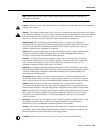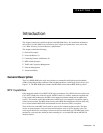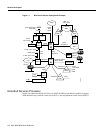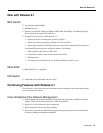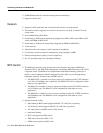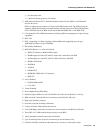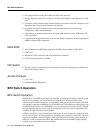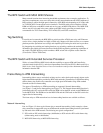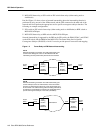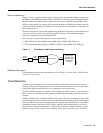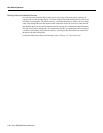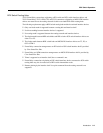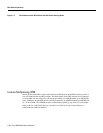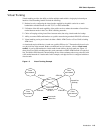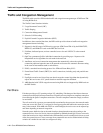
Introduction 1-7
BPX Switch Operation
The BPX Switch with MGX 8220 Shelves
Many network locations have increasing bandwidth requirements due to emerging applications. To
meet these requirements, users can overlay their existing narrowband networks with a backbone of
BPX switches to utilize the high-speed connectivity of the BPX switch operating at 19.2 Gbps with
its T3/E3/OC3/OC12 network and service interfaces. The BPX switch service interfaces include
BXM and ASI ports on the BPX switch and service ports on MGX 8220 shelves. The MGX 8220
shelves may be co-located in the same cabinet as the BPX switch, providing economical port
concentration for T1/E1 Frame Relay, T1/E1 ATM, CES, and FUNI connections.
Ta g Sw i tc h in g
For multi-service networks, the BPX 8650 tag switch provides ATM, frame relay, and IP Internet
service all on a single platform in a highly scalable way. Support of all these services on a common
platform provides operational cost savings and simplifies provisioning for multi-service providers.
By integrating the switching and routing functions, tag switching combines the reachability
information provided by the router function with the traffic engineering optimizing capabilities of
the switch. The BPX 8650 tag switch combines a BPX switch with a separate router controller
(Cisco Series 7200 or 7500 router).
The BPX Switch with Extended Services Processor
With a co-located ESP, the BPX Switch adds the capability to support ATM and Frame Relay
switched virtual circuits (SVCs), and also soft permanent virtual circuits (SPVCs). Refer to the Cisco
WAN Service Node Extended Services Processor Installation and Operation document for detailed
information abut the ESP.
Frame Relay to ATM Interworking
Interworking allows users to retain their existing services, and as their needs expand, migrate to the
higher bandwidth capabilities provided by BPX switch networks. Frame Relay to ATM Interworking
enables frame relay traffic to be connected across high-speed ATM trunks using ATM standard
Network and Service Interworking
Two types of Frame Relay to ATM interworking are supported, Network Interworking
(see Figure 1-2) and Service Interworking (see Figure 1-3). The Network Interworking function is
performed by the AIT card on the IPX switch, the BTM card on the IGX switch, and the FRSM card
on the MGX 8220. The FRSM card on the MGX 8220 and the UFM cards on the IGX switch also
support Service Interworking.
The frame relay to ATM network and service interworking functions are available as follows:
Network Interworking
Part A of Figure 1-2 shows typical frame relay to network interworking. In this example, a frame
relay connection is transported across an ATM network, and the interworking function is performed
by both ends of the ATM network. The following are typical configurations:
• IGX switch or IPX switch frame relay (shelf/feeder) to IGX switch or IPX switch frame relay
(either routing node or shelf/feeder)
• MGX 8220 frame relay to MGX 8220 frame relay



